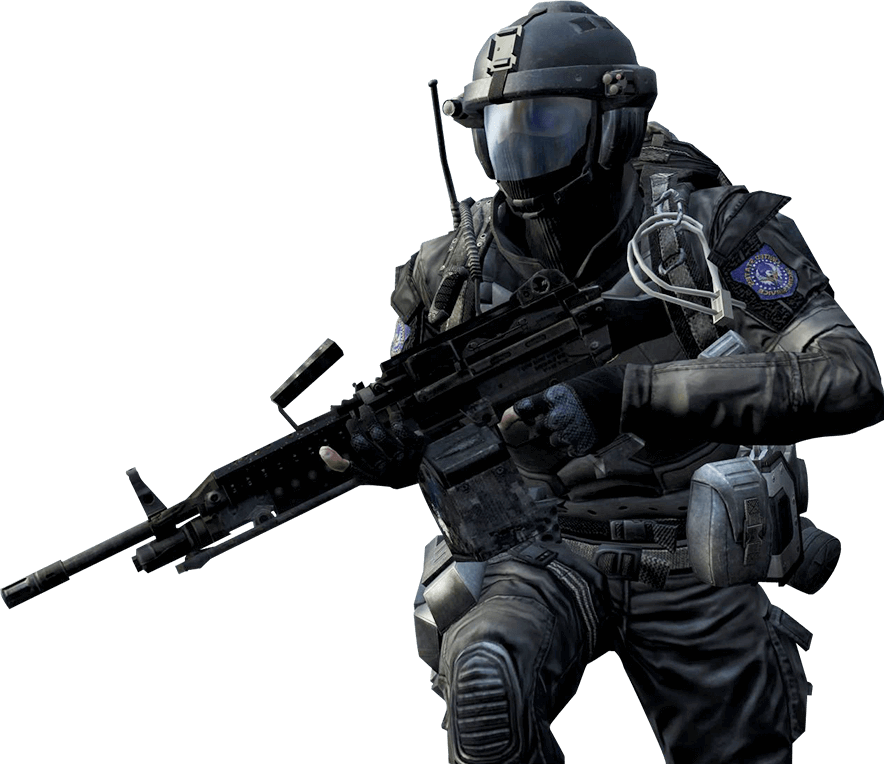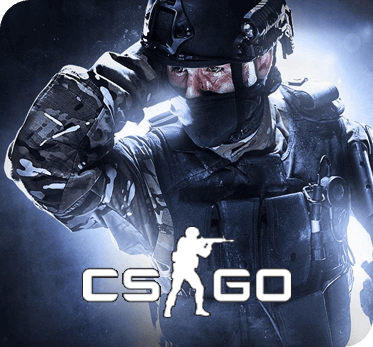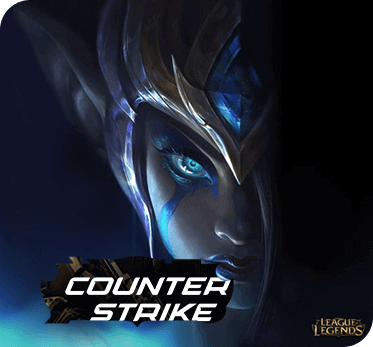Damage analysis in gaming
Table of Contents
Understanding Damage Analysis in Gaming
In our quest at Gamebling to elevate the competitive edge of our players, we delve deep into the intricacies of damage analysis in gaming. It's not just a number game; it's the fine line that distinguishes a victorious round from a narrow defeat. As competitors stake real-world currency on their gameplay success, dissecting the damage mechanics becomes a pivotal piece of their strategy.
Analyzing damage output and intake allows gamers to refine their approach in each match. Whether it's pinpointing the effectiveness of a headshot compared to a body shot or assessing the impact of weapon choice on a player's kill rate, damage analysis in gaming serves as the blueprint for improvement. For a platform like Gamebling, where precision and strategy can have monetary implications, a thorough understanding of these metrics is paramount.
As gamers, our personal experiences often lead to revelations about the mechanics of damage. Take the time a single well-placed grenade shifted the tide of an entire match, or how mastering the spray pattern of a particular rifle turned hit-and-miss encounters into surefire eliminations. These moments underline the importance of damage analysis in gaming and its direct influence on the outcome of every engagement.
Damage Formulas in Practice
When gamers on Gamebling engage in combat, they aren't just firing off rounds--they're executing calculated decisions based on damage formulas. Analysis often begins with understanding the core algorithms that govern how damage is dealt and received. A weapon's base damage, its interaction with armor, and distance-related damage falloff are all variables that can sway the result of an encounter.
For instance, in a game like Counter Strike, knowing when to engage or back off can hinge on the understanding that rifles generally incur a higher base damage but may require precise aim, whereas submachine guns might offer a higher rate of fire at the cost of reduced damage. These variables, when understood, can be leveraged to our players' advantage, particularly when real earnings are on the line.
Real-Time Adaptation and Strategy
Damage analysis in gaming demands that players adapt in the heat of the moment. It's not enough to know that your sniper rifle can dispatch an enemy in a single shot; you must also account for positioning, enemy health, and potential escape routes. As a competitive platform, Gamebling encourages players to think two steps ahead--anticipating opponent moves and preparing countermoves.
In one match, I observed a player alter their entire playstyle after reviewing damage analytics from previous rounds. They switched to a weapon with higher armor penetration to counteract opponents' tactical gear choices. This pivot epitomizes the dynamic nature of damage analysis in gaming, where adaptation is the cornerstone of high-stakes play.
Player Growth Through Analytics
Gamebling's unique " Body Heat Maps" and "Map Heat Maps" serve as more than just post-match analytics; they are the crucible for player growth. By reviewing these maps, players can determine hot zones for enemy traffic, sniper sightlines, and high-risk areas. These insights, derived from robust damage analysis in gaming, inform future tactics, leading to a more calculated approach in subsequent matches.
An anecdote from a seasoned gamer comes to mind, where analyzing his damage output patterns revealed a tendency to fare better in close-quarters combat. Leveraging this information, he tailored his arsenal and game plan to focus on engagements within tight spaces, drastically improving his win-to-lose ratio on Gamebling. This illustrates the transformative power of tailored analytics in sharpening gaming prowess.
The Evolution of Damage Analytics Tools
The journey from using rudimentary damage per second (DPS) counters to today's advanced analytics tools reflects the evolution of damage analysis in gaming. Gone are the days of generic stats; now, players demand detailed breakdowns that dissect every bullet's journey from barrel to target. At Gamebling, we've harnessed this desire for knowledge, providing a suite of data-driven tools designed to optimize our player's performance.
Imagine the thrill of watching your ELO rating soar after implementing new techniques derived from our analytics. With each match, Gamebling's users are redefining what it means to improve through data. As we progress through our beta phase, the relentless pursuit of the ultimate analytics suite is both our commitment and challenge. It's a continuous cycle of innovation, responsive to the needs and ambitions of our dedicated gaming community.
Collaboration with our players shapes the future of our analytics. We heed their stories, such as the underdog whose meticulous study of damage patterns led to a triumphant climb up the competitive ladder. These narratives fuel our development, pushing us to craft tools that not only record damage but also narrate the silent stories behind each statistic.
The future of damage analysis in gaming looks bright, and at Gamebling, we're excited to be at the forefront of this revolution--transforming numbers on a screen into real-world triumphs and earnings for our community of competitors.
Understanding Body Heat Maps
Imagine you're deep into a session on Gamebling, and with every calculated move, you're not just earning--it's as if you can feel the game. That's the real-time thrill of gaming, where emotions run high, and now, thanks to research, we have "Body Heat Maps" to visualize this phenomenon. These maps are not just striking images; they represent a fascinating intersection of psychology and physiology, illustrating where we experience emotions in our bodies.
Body Heat Maps show warm colors in areas of increased activity and cool hues where the sensation decreases. Picture the joy of a successful kill in-game, lighting up the map with vibrant reds and oranges akin to a victory bonfire. In contrast, the tension before a crucial match might be a huddle of blues around your chest. This isn't just poetic language--it's the body's expressive canvas in the throes of competition.
My journey through the competitive arenas of Gamebling often leaves me reflecting on these maps. They serve as a reminder that our virtual actions elicit genuine physical responses. And while my focus as a gamer is sharp, the science behind our embodied experiences adds a layer of wonder to the digital battles we fight and the victories we claim.
Applying Heat Maps in Competitive Gaming
As a regular on the "5 vs 5 Competitive" mode, I've seen firsthand how understanding emotions via Body Heat Maps can turn the tides. It's a strategic tool, allowing us to identify patterns and perhaps even predict an opponent's next move. A surge of warmth might indicate confidence, while a cool patch could reveal doubt. By tapping into these cues, we gain insight beyond the screen.
The use of Body Heat Maps extends into personal performance optimization too. After a grueling match, I often study the map to correlate high-intensity zones with my in-game decisions. Did a spike in excitement lead to a risky but successful play? Or did a dip translate to a missed opportunity? This self-awareness is invaluable for growth in a landscape where emotional agility can be as critical as tactical prowess.
Gamebling's integration of Body Heat Maps as an analytical feature not only benefits individual players but also enhances team dynamics. Through collective review, my team and I can understand our emotional synchronicity, or lack thereof, and adjust our strategies accordingly. This deeper dive into our gaming anatomy strengthens our connection, turning us into a more cohesive unit.
Moreover, these maps have revealed a universal language of emotion, evident in the flush of triumph or the pallor of defeat. It's a humbling reminder that we, as gamers, share a common emotional heartbeat, no matter where we are or how we compete.
Beyond the Game: Personal Insights
Having been with Gamebling since its beta days, I've witnessed the platform evolve, but the constant has been the journey towards understanding our human element. The Body Heat Maps are more than just a feature; they're a reflection of our passion, fear, elation, and every tremor of anticipation our bodies register as we play.
There's a certain poetry in the way these maps echo our internal experience, and they have prompted me to explore the depths of my emotional world, both on and off the platform. They remind us that our digital avatars are extensions of ourselves, and every pulse of color on the map is a story of the heart.
These illuminations, these Body Heat Maps, serve as companions in our virtual odyssey. They remind me that in the heat of competition, it's the warmth of our human experience that truly glows. I carry these insights forward, letting them infuse not only my gameplay but also the way I engage with the world beyond the screen.
Understanding Player Performance Heatmaps
An often underestimated yet invaluable asset in competitive gaming is the analysis of in-game movements and positioning, which is where Player performance heatmaps come into play. At Gamebling, we've seen firsthand how these heatmaps have fostered a transformative gaming experience. By visualizing areas with high-frequency activity or pinpointing spots where players may hesitate, these heatmaps serve as a strategic compass of sorts.
Despite their simplicity, the vibrant reds and cool blues of a Player performance heatmap unravel complex tales of in-game strategies. From our perspective, any gamer looking to refine their skills should treat these color-coded guides as essential. Not just aesthetics, these maps provide tangible pathways to understand and optimize player behaviors and tactics.
Whether it's our Death Match or the 1 vs 1 Ladder, Gamebling integrates the Player performance heatmap tool seamlessly. As a player, you can see where your engagements are most frequent or where you might need to pivot your approach. This level of insight is pivotal in deciding whether to adopt a more aggressive strategy or to shore up defensive positioning on the map.
Real-Time Strategy Enhancement
Imagine being able to adapt on-the-fly based on real-time data. That's the power of a Player performance heatmap. In the thick of gameplay, it's easy to miss subtle patterns. But with post-match analysis through heatmaps, our players have been able to recalibrate their movements effectively, often leading to more successful subsequent matches.
On a personal note, watching how our platform's players evolve their strategies with the help of Player performance heatmap data is incredibly rewarding. There's a marked transformation in how they tackle each arena. It's almost like watching chess players learn new openings and endgames, except with much more rapid iterations and adaptations.
The beauty of Player performance heatmap lies in its ability to condense hours of gameplay into bite-sized, comprehensible data. At Gamebling, one anecdote comes to mind: a user who initially struggled with map awareness reviewed their heatmap data, adjusted their hot zones, and started outmaneuvering opponents previously dominating the playfield. It's a testament to the player's willingness to learn and the heatmap's efficacy.
In our 5 vs 5 Competitive matches, we often see teams utilize Player performance heatmap to devise team strategies. It's one thing for an individual to change their game; it's another level when a team collectively fine-tunes their approach, leading to a symphony of precision and coordination that's truly a sight to behold.
Humanizing Data with Player Heatmaps
There's a unique narrative behind every Player performance heatmap. It's not just about clusters of colors; it's about the sweat, the reflexes, and the heart-pounding moments behind each pixel. At Gamebling, we understand that behind every data point is a gamer with ambitions, a player forging their path to triumph.
Our platform prides itself on not just presenting cold, hard stats but in providing a canvas where players can paint their journey toward improvement. Player performance heatmaps are more than just tools; they represent the personal stories of gamers pushing their limits.
As a team, we've been humbled to see how these heatmaps have become cornerstones for community discussions. Players share their heatmaps, seeking advice, and offering tips, thus fostering a vibrant hub of collective learning and camaraderie. It's this fusion of technology and human connection that truly sets Gamebling apart.
Heatmaps, with their visual tales of battles fought, create a common ground where veterans and novices alike can connect and grow. It's not just about being the best; it's about everyone getting better together. The Player performance heatmap becomes a shared language, a bridge between competition and community that's rare in the world of online gaming.
How do you calculate damage in a game?
At Gamebling, we understand that damage calculation in a game like Counter Strike is not just about subtracting hit points. It involves a complex algorithm that factors in several variables such as the weapon's base damage, its accuracy, rate of fire, and even the part of the body where the bullet lands. Each weapon has its own set of statistics, and understanding these can be the difference between a win and a loss. For instance, a headshot usually inflicts more damage than a body shot due to multipliers applied for such precise aiming. Additionally, armor that players wear can mitigate the damage received, so choosing the right moment and the right weapon to penetrate that armor is key in high-stakes matches.
Take it from me, during an intense match on our platform, I've witnessed players orchestrating their moves like grandmasters, waiting for that perfect moment to strike with precision, maximizing their damage output. By internalizing these calculations, they transcend from being mere players to becoming strategists of the battlefield.
What is a damage indicator?
A damage indicator is a critical feature in many competitive games that provides immediate feedback to the player about the damage they have dealt or received. When you land a shot, a damage indicator can show numbers that pop up, indicating the exact amount of damage done to the opponent. This feedback helps in making split-second decisions about whether to continue the engagement or retreat and re-strategize. On the receiving end, it warns players about their own vulnerability and the need to take cover or find a health boost.
From our experience at Gamebling, we've seen how players use damage indicators to adjust their tactics in real-time. A low damage hit might suggest switching to a weapon with higher armor penetration or changing position to get a better shot. These indicators are not just numbers; they're signals that guide our players towards making smarter, more informed decisions in the heat of combat.
What are some common misconceptions about damage analysis in gaming?
One common misconception is that damage analysis in gaming is all about raw firepower. However, in reality, it's a more intricate dance of numerous factors. Players might believe that the weapon with the highest damage output is always the best choice, but they often overlook aspects such as recoil, reload speed, and mobility. Through our platform, we aim to dispel these myths by providing data-driven insights, encouraging players to consider not just the damage a weapon deals but how it fits into their overall strategy and playstyle.
For example, in a match where agility is crucial, opting for a lighter submachine gun could outweigh the benefits of a rifle's higher damage. At Gamebling, we offer analysis tools that help players identify these nuances in their gameplay. This empowers them to craft strategies that are tailored to their strengths and the unique circumstances of each match.
Gaming Resources
- Entertainment Software Rating Board (ESRB) - The ESRB provides information on game ratings and content descriptors, ensuring that consumers, especially parents, can make informed decisions about video games and apps they are considering.
- Centers for Disease Control and Prevention (CDC) - Parental Monitoring - A factsheet from the CDC providing guidance for parental monitoring of adolescent's activities, including gaming.
- American Psychological Association (APA) - The Benefits of Playing Video Games - This APA article discusses the benefits that video games can have, including cognitive, motivational, emotional, and social benefits.
- American Academy of Pediatrics (AAP) - Media and Children's Health - The AAP offers resources to help children maintain healthy lifestyle habits while engaging in various forms of media, including gaming.
- National Institute of Mental Health (NIMH) - Technology and the Future of Mental Health Treatment - NIMH provides insight into how technology, including video games, can be leveraged for mental health treatment and the importance of monitored use.
- World Health Organization (WHO) - Gaming Disorder - The WHO's Q&A about gaming disorder, providing a detailed explanation of the condition, its implications, and the importance of awareness and balance in gaming habits.
- Youth.gov - Impact of Video Games on Adolescent Development - Information provided by Youth.gov on the potential impact of video games on teen development including both positive aspects and risks.
- Common Sense Media - Video Games - Common Sense Media provides independent ratings, age recommendations, and other information about all types of media, including video games, to help parents make informed decisions.
- MedlinePlus - Health Issues and Video Games - An article by MedlinePlus that provides guidance on how to prevent health issues that might arise from video gaming, such as repetitive strain injuries and sedentary lifestyle risks.
- ScienceDirect - The Benefits of Playing Video Games - A scholarly article hosted on ScienceDirect that reviews recent research on the positive effects of video gaming, including psychological and social benefits.



